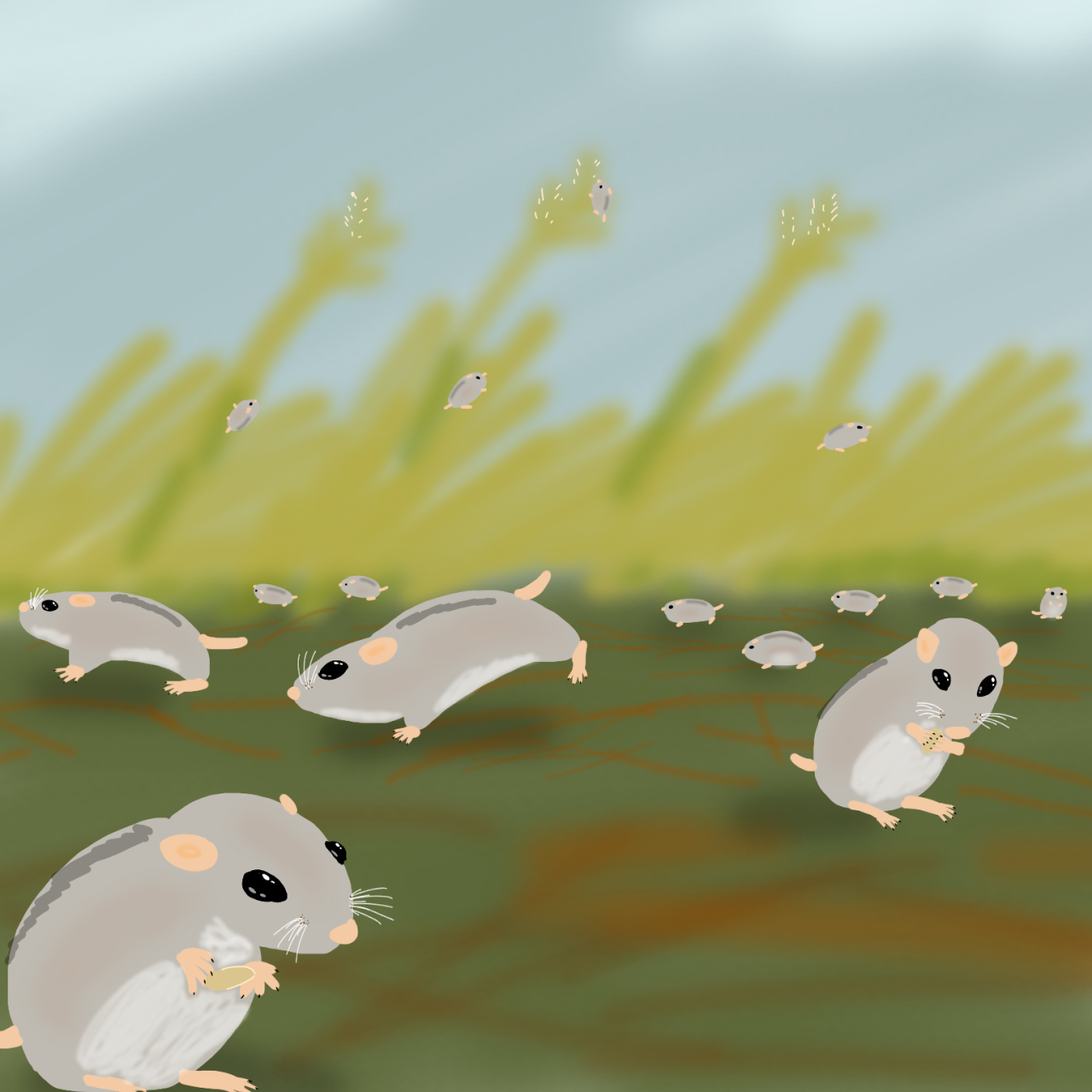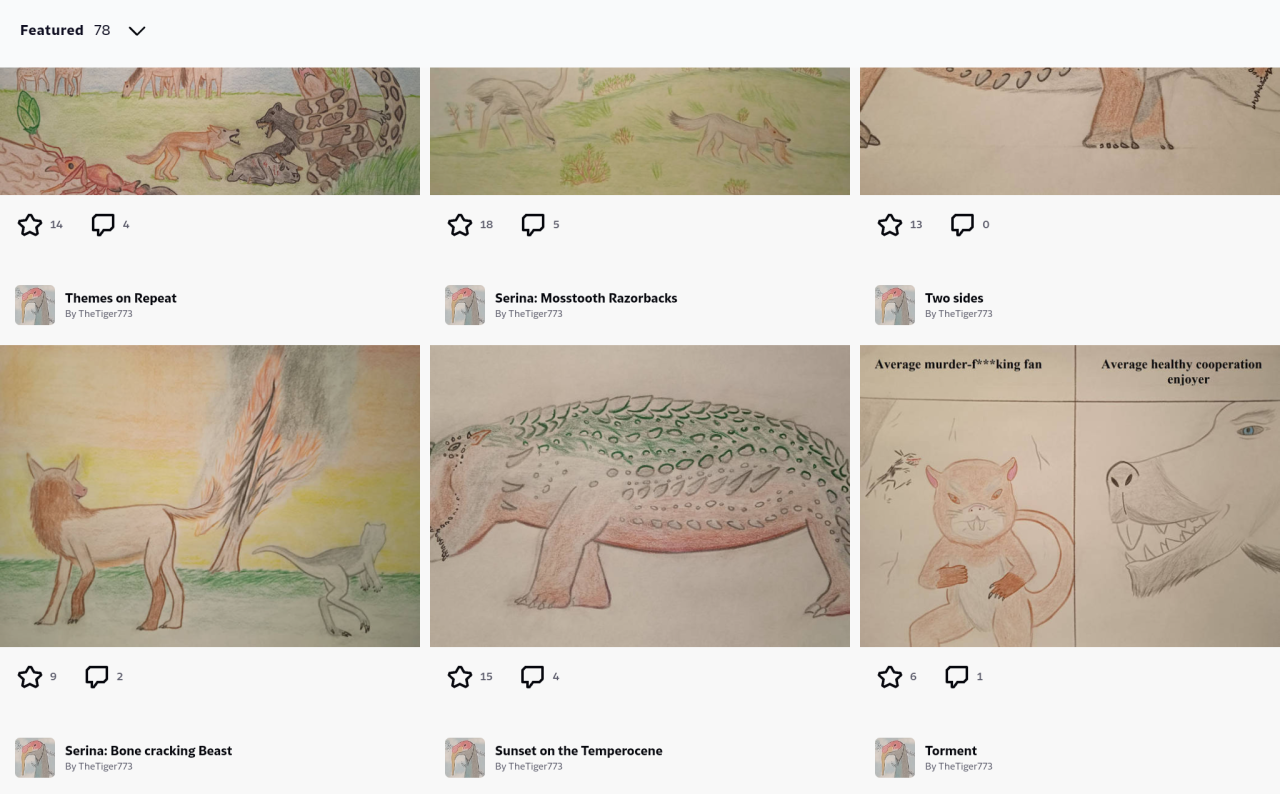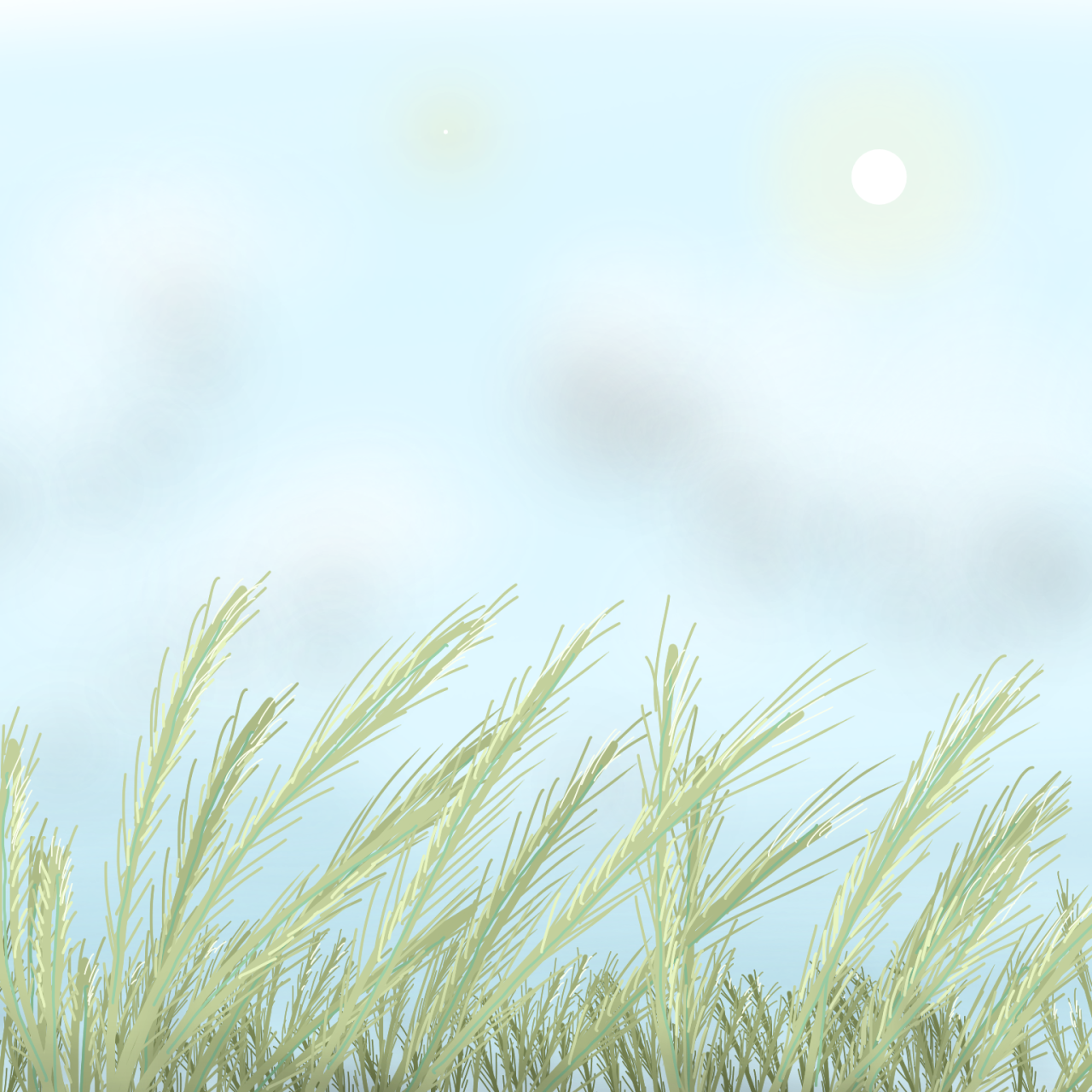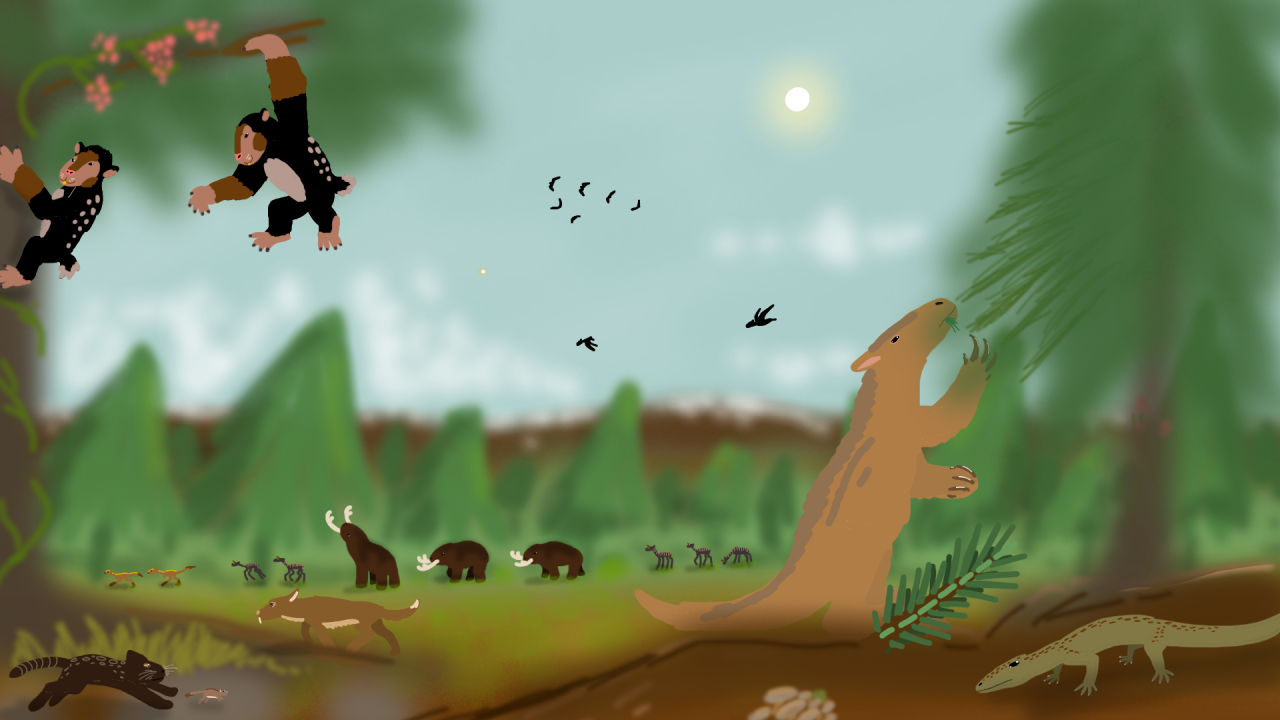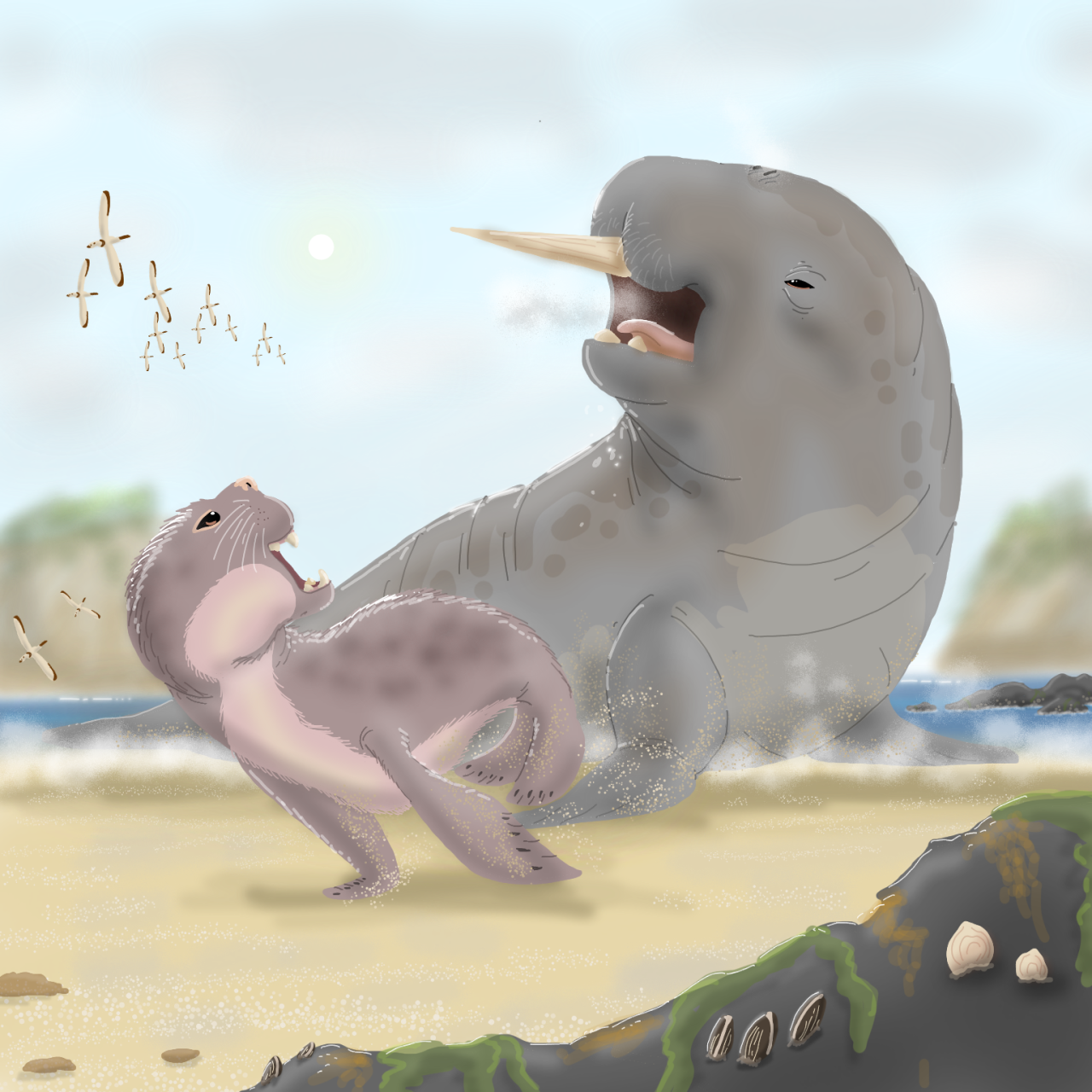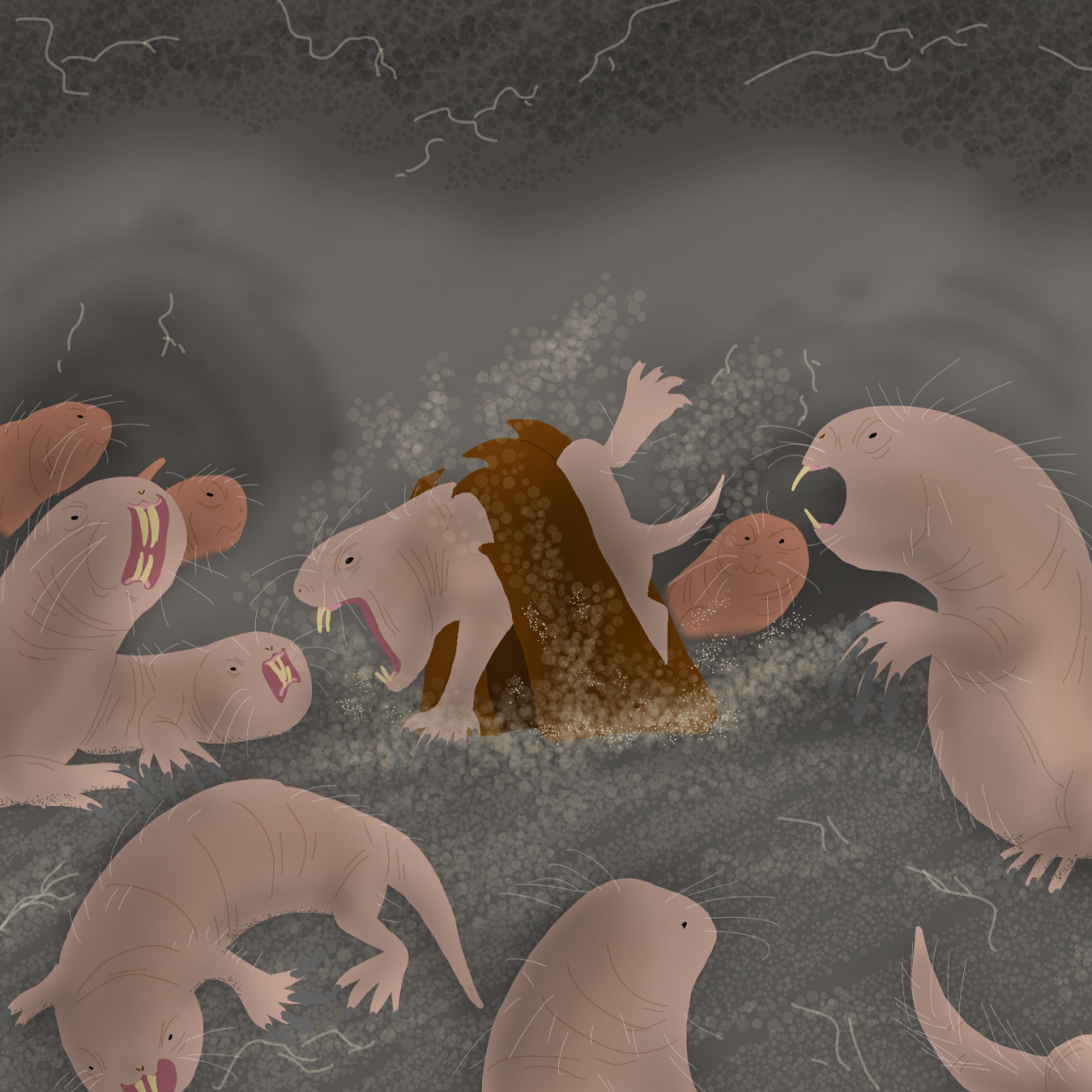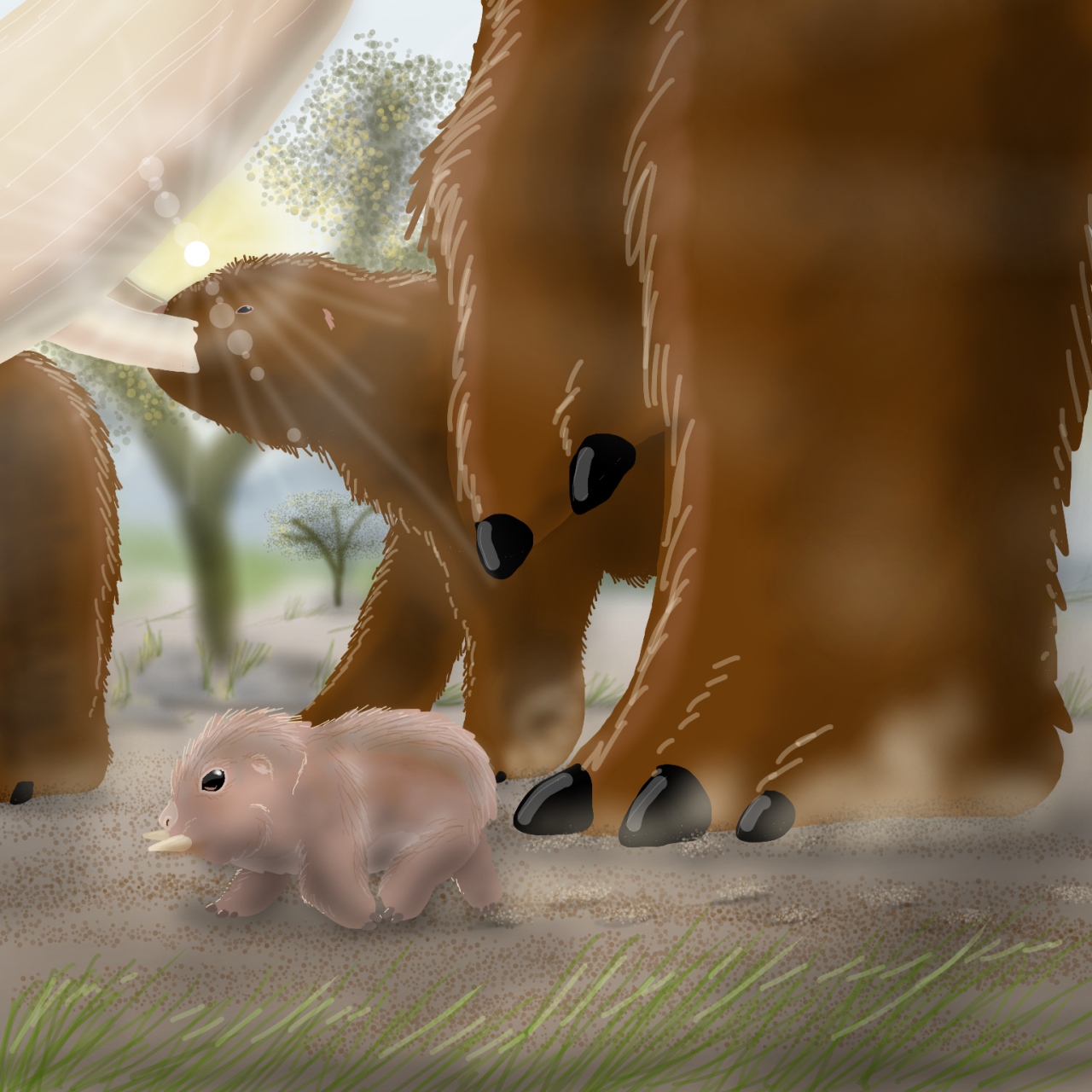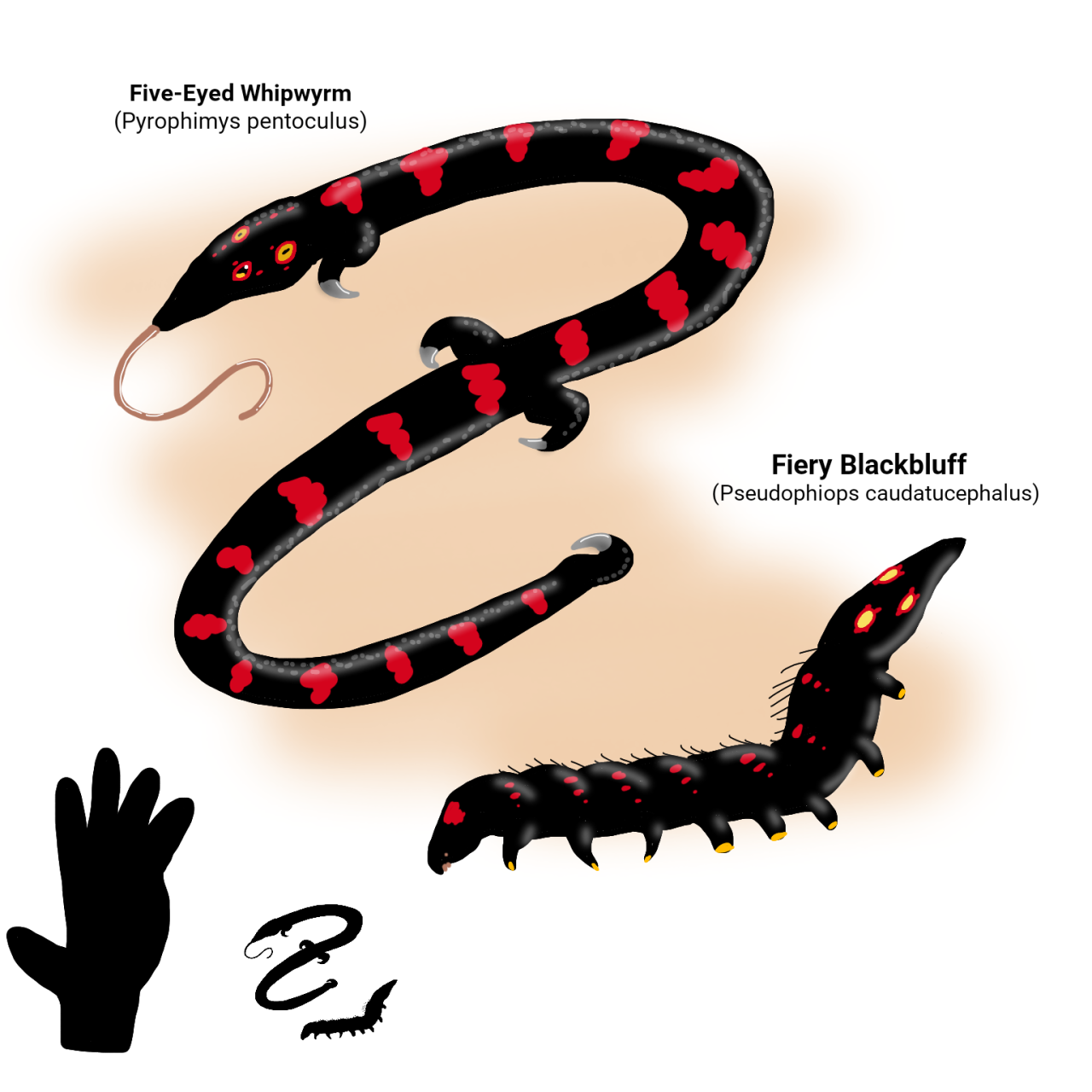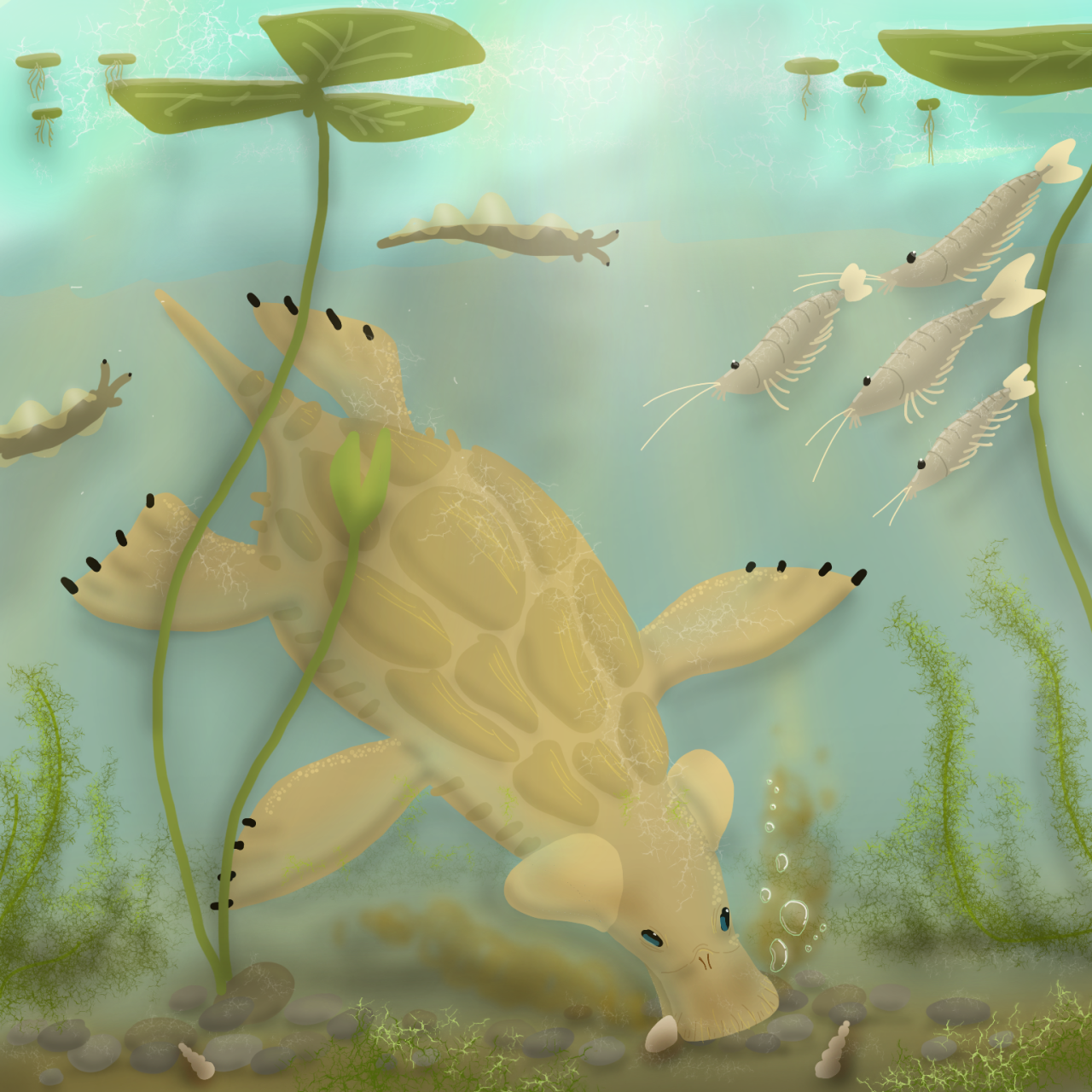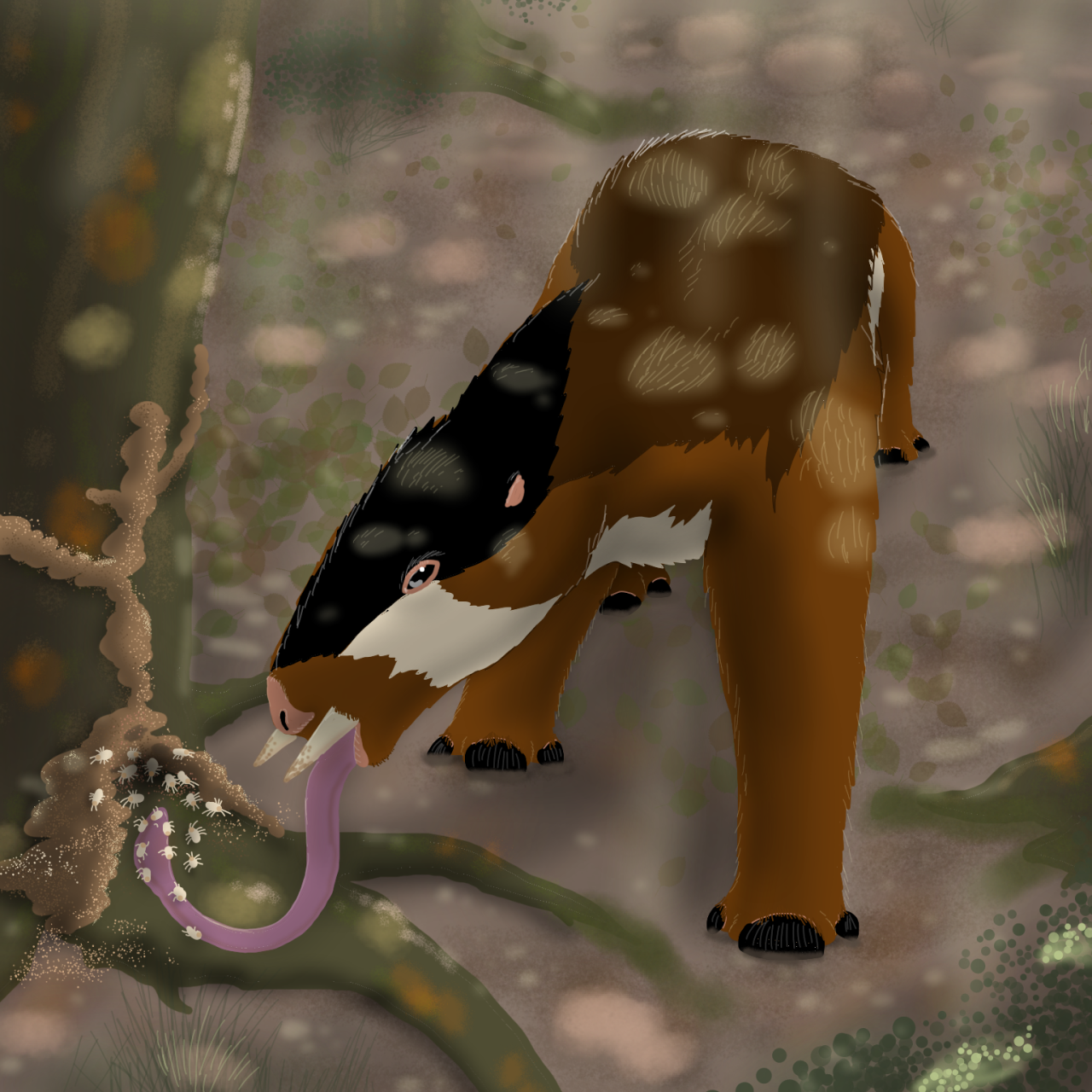The Early Rodentocene: 1-5 million years post-establishment
Speaking of Species: The Process of Speciation
The sudden introduction of a new species into a world without any checks on their population was certainly not to start as a fruitful one. With no predators, competition or environmental restrictions to their numbers, the initial conquest would nearly end in disaster, and snuff out this developing world, before it could even begin.
Populations would explode into the millions, as the hamsters fed on the rich abundance of plants, seeds and insects, decimating their populations until there wasn’t enough to sustain the ravenous rodents, who would quickly starve en masse. This would lead to a significant number of plant and invertebrate extinctions early on, unable to adapt to the onslaught of an outside-context problem. But others would persist, and some hamsters would survive, and the process would repeat itself all over: a cycle of boom-and-bust that would greatly alter the ecosystems in the first few millenia.
By 10,000 years, however, the hamsters had reached an equilibrium in the planet: the organisms they fed upon had adapted to their presence: either by better fleeing them, better defending against them, or simply reproducing in such astounding quantities that they could not all be consumed. As such, the hamsters bred fewer and their populations leveled off as the ecosystem evolved to keep them in check, nature fending off what could have become a disastrous introduction of an invasive species, into a brand new order, where the former invaders were just another piece of the ecological puzzle.
But the rapid rises and falls of the hamster population would have another, and far more impactful, effect on the history of the planet’s evolution. Since the populations at their lowest would require a significant amount of inbreeding to rebound, mutations began to arise in the population. Serious, deleterious abnormalities that brought crippling diseases would quickly be weeded out: but others, more subtle and beneficial, even, would gradually form the catalyst to greater changes.
A few genes here and there would alter the hamsters’ physiology, in a myriad of assorted different ways. The unusual mutants were still one species, but they had various traits that were mixed and matched among them, for better or for worse, and some combinations would become advantageous for a specific population, become stable as their descendants bred true, and soon would become their own distinct subspecies.
And for the next five million years, this mixing and matching of this evolutionary mess would provide the catalysts for the evolution of the planet. A bigger-eared, light-colored hamster could lose more heat in a hotter climate, and thus survive in an arid biome where others could not. A hamster with longer limbs and a longer balancing tail could become better at climbing trees. A larger hamster would be able to find more food, defend against competitors, or even prey upon other hamsters as food. And so, as their behavioral traits became more defined to suit their physiological advantages, they started using these to avoid competition, exploiting and specializing on one food source that others did not: the partitioning of niches.
Eventually these drifts would cause their genes to become less compatible, and for their behavior to favor those matings that occured within their own subspecies. Hybridized offspring became less viable and soon were impossible altogether as the different populations’ chromosomes could no longer match with each other properly: by this point, they had become completely separate species, which could only reproduce with their own kind, or produce crossbred offspring that couldn’t reproduce themselves, keeping the gene pools separate.
As the beneficial mutations accumulated in the different species that had arisen, they would in turn diverge further from one another as they each adapted to a new lifestyle that had less competition from others. There were numerous food sources to be exploited in the planet’s diverse ecosystems, and each species that could specialize to take better advantage of each resource had better chances of thriving and passing on their genes.
And with similar problems came similar solutions: as each species of hamster evolved to exploit each food source, they would develop adaptations that were uncannily similar to those of unrelated species back on Earth: convergent evolution. Many of the hamster species would quickly converge on other Earth rodents: seed-eaters similar to groundhogs and dormice stashed food underground, nut-eating tree dwellers would converge heavily on squirrels, long-legged herbivores that foraged on the forest floor would resemble agoutis and maras, while jumping, hopping plains dwellers would develop long, jumping hind legs and long tails for balance, becoming similar to kangaroo rats and jerboas.
But in the vacancy of other mammal niches that would have had competition on Earth, some species would take on forms no terran rodent possibly could. Some specialized upon insectivory, developing longer snouts and sharper teeth, and coming to occupy roles filled by shrews, moles and hedgehogs. Others, particularly the larger and more aggressive species, would instead set their sights on another, more abundant food source: other species of hamsters, which would cause them to specialize into small-scale predators, resembling ferrets, weasels, and grasshopper mice.
And so the saga soon skips to 10 million years post-establishment: the Middle Rodentocene, where the process of speciation has reached an all-time high, and produced spectacular diversity, from one founding species….
▪▪▪▪▪▪▪

